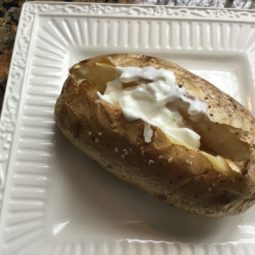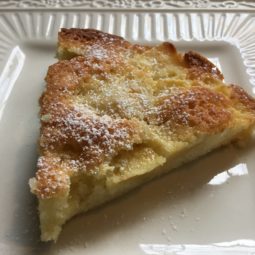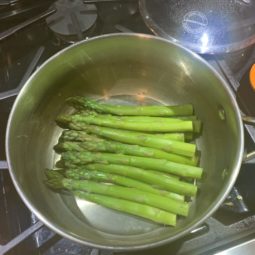Shortbread
This shortbread recipe is wonderfully buttery, light and crisp. It’s a classic example of simplicity at its best with very few ingredients.
Butter is the key ingredient here, so to showcase your masterpiece, I recommend using a high quality butter.
I typically use unsalted butter for baking, but this recipe does benefit from a pinch of salt. In this case use an eighth of a teaspoon. If salted butter is all you have on hand, use that and omit the salt entirely. Again, a good quality butter is key.
Vanilla is the only essence this needs but you can always add dimension with another flavor. I like almond essence. You could also add a seasonal flavor and make it perfect for the holidays.
This recipe by the way, is great recipe for kids to make. The dough comes together like play dough. It’s soft and easy to work with. You can make different shapes. Typically shortbread can be cut into wedges from a large round disc, also called “petticoat tails”. You can simply cut the shortbread into bars or bake them as cookies. You’ve probably seen all of these shapes in commercially available shortbread.
The instructions here are for wedges. All you need is a round cake pan. A springform pan works even better, so you’re not fighting to release it from the bottom. But if you want to kick it up a notch, use a mold. I was gifted one that has a pretty floral pattern and is perfect for this recipe!
A word about the dough. Once you have it pressed in and smoothed out, you’ll want to prick the top of the shortbread before baking. This helps release steam while the shortbread is baking and prevents bubbling. When pricking the top, use a fork and be sure to prick a symmetrical design – it will remain visible after the shortbread has baked. I favor a herringbone pattern. You can see it in one of the pictures below.
What You’ll Need to Make Shortbread
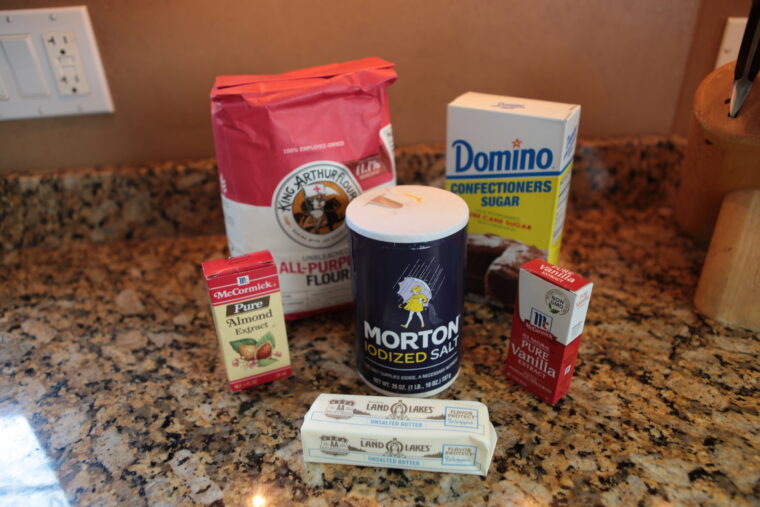
How To Make Shortbread
Start by mixing together the butter and sugar. Use a good quality butter and make sure it comes to room temperature before you use it.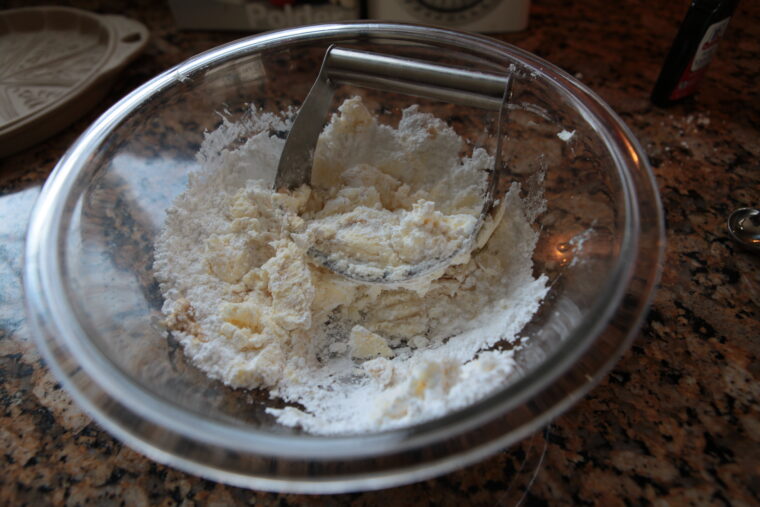
Next add the flour and vanilla. The vanilla is enough to bring together the ingredients into a soft dough. You could also add a quarter teaspoon of a second flavoring at this point.
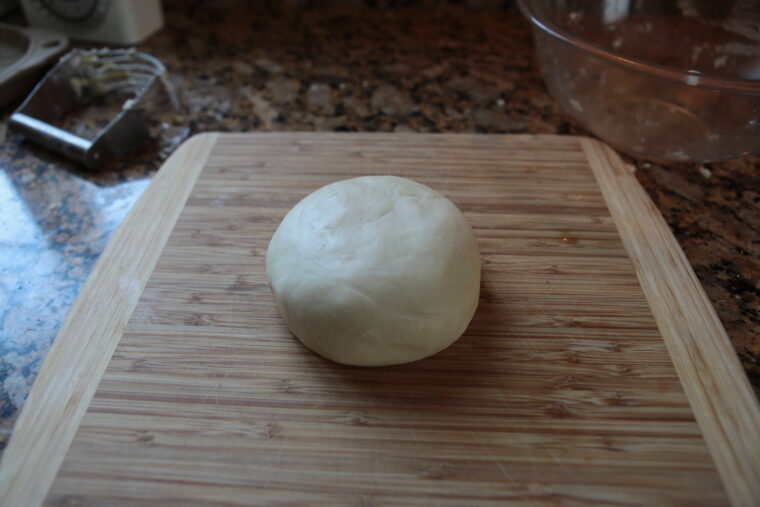
Press the dough into a prepared pan. To prepare the pan, brush with melted butter.

Smoothen out the dough and then prick all over with a symmetrical pattern such as a herringbone pattern (shown in the next picture).

Bake at 325F for 30 minutes or until the surface is a light golden and the edges a deeper golden brown.

Remove from oven and allow the shortbread to cool completely. It should pull away slightly from the edges. If you try to turn it over when it is too warm, it may break or stick. Use a knife to gently nudge the shortbread away from the edges if needed.
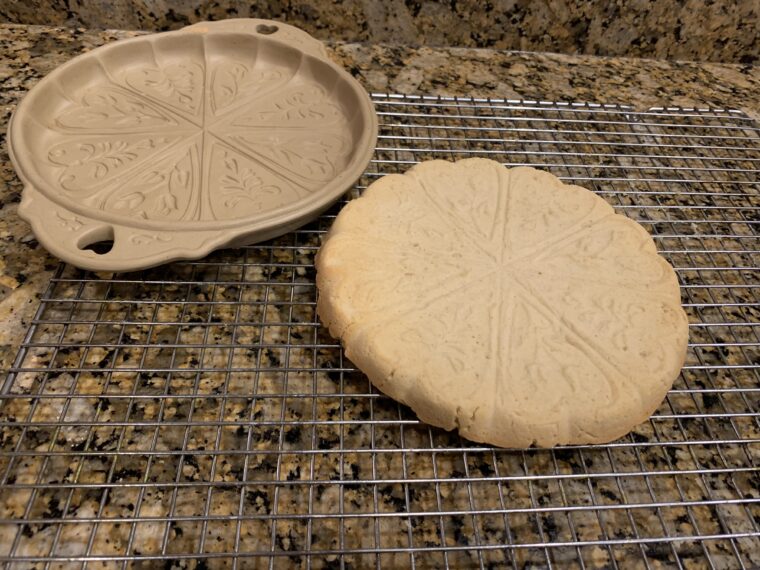
Transfer to a cutting board and using a sharp knife, cut into wedges.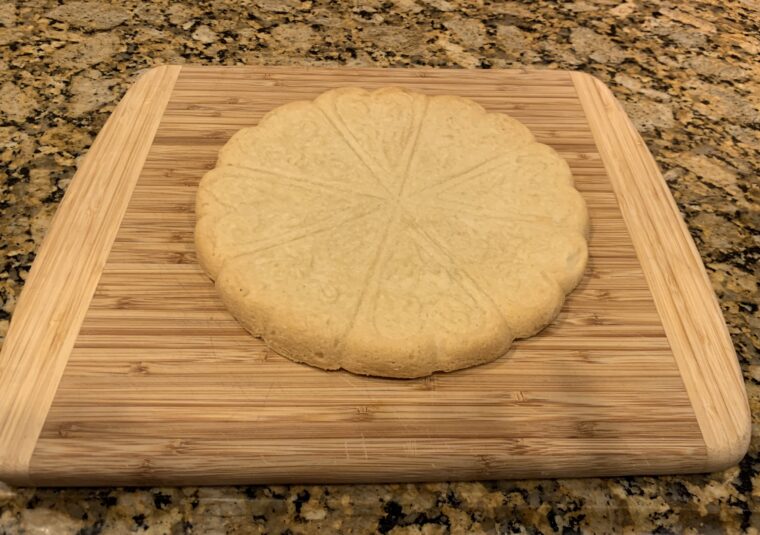
Store in an airtight container.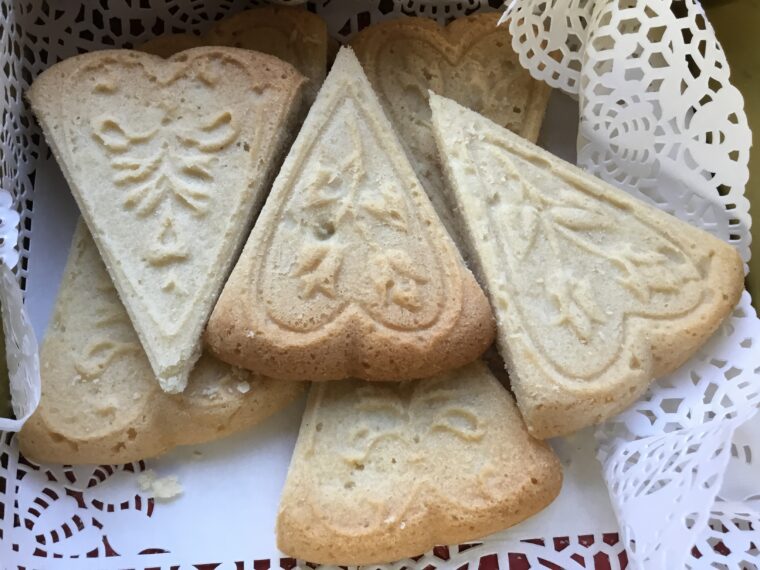
Ingredients
- 1/2 cup butter salted or unsalted + 1/8 tsp salt
- 1/2 cup confectioner's sugar
- 1 cup all purpose flour
- 1 tsp pure vanilla essence
- 1/4 tsp almond extract or other flavoring optional
Instructions
- Preheat the oven to 325F and make sure the convection feature is enabled.
- Brush an 8 inch cake pan or mold with melted butter.
- In a medium bowl, mix the butter, sugar and vanilla.
- Add the flour and mix until it comes together to form a soft dough.
- Remove the dough and press into the greased cake pan or mold.
- Smoothen the surface using your fingers or a smoother if you have one.
- Bake at 325F until the surface is a lighter golden and the edges a slightly deeper golden brown. About 30 minutes or so.
- Remove from oven and allow the shortbread to cool completely. It should pull away slightly from the edges. If needed, nudge the shortbread away from the edge using a knife. If using a regular pan, place a board on top of the pan. Holding the pan and board together tightly, flip over. You should feel the weight shift. If not, give it a firm pat.
- Use a sharp knife cut the shortbread into 8 wedges.
- Serve immediately or store the shortbread in an airtight container.
Nutrition Information Disclaimer
Ginny’s Recipe Collection provides nutritional breakdowns for informational purposes only. The data on this site has not been evaluated and approved by the Food and Drug Administration (FDA). The data is calculated using an online 3rd party nutritional calculator. Therefore these figures should be considered as estimates only. Online calculators may yield different results based on their own nutritional fact databases and algorithms they use. Furthermore, varying factors such as product types, adjustment of seasonings, natural variation in produce, and the manner in which they are processed may affect the final nutritional information. To get the most accurate analysis, please consult a registered dietician.
© Ginny's Recipe Collection


